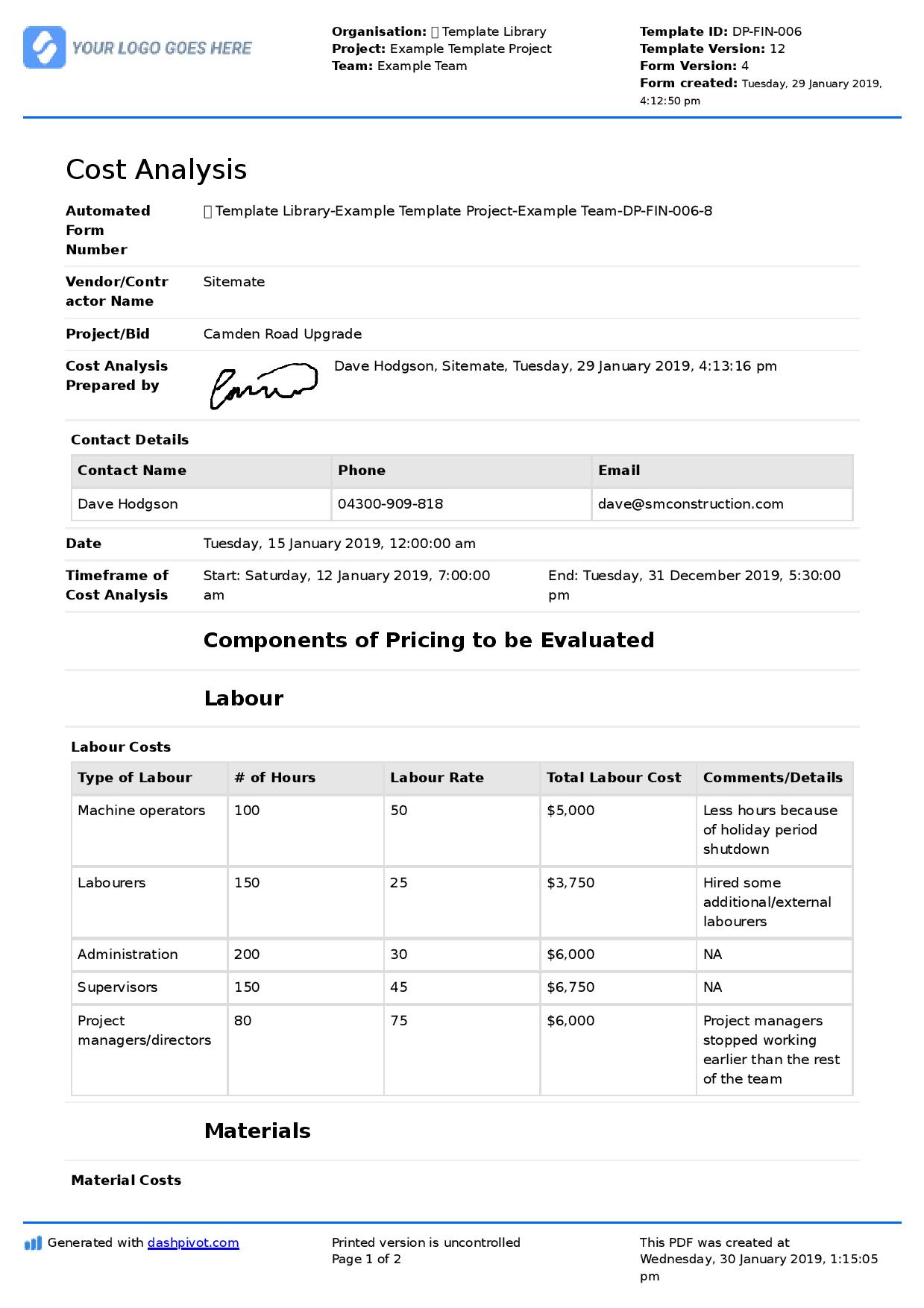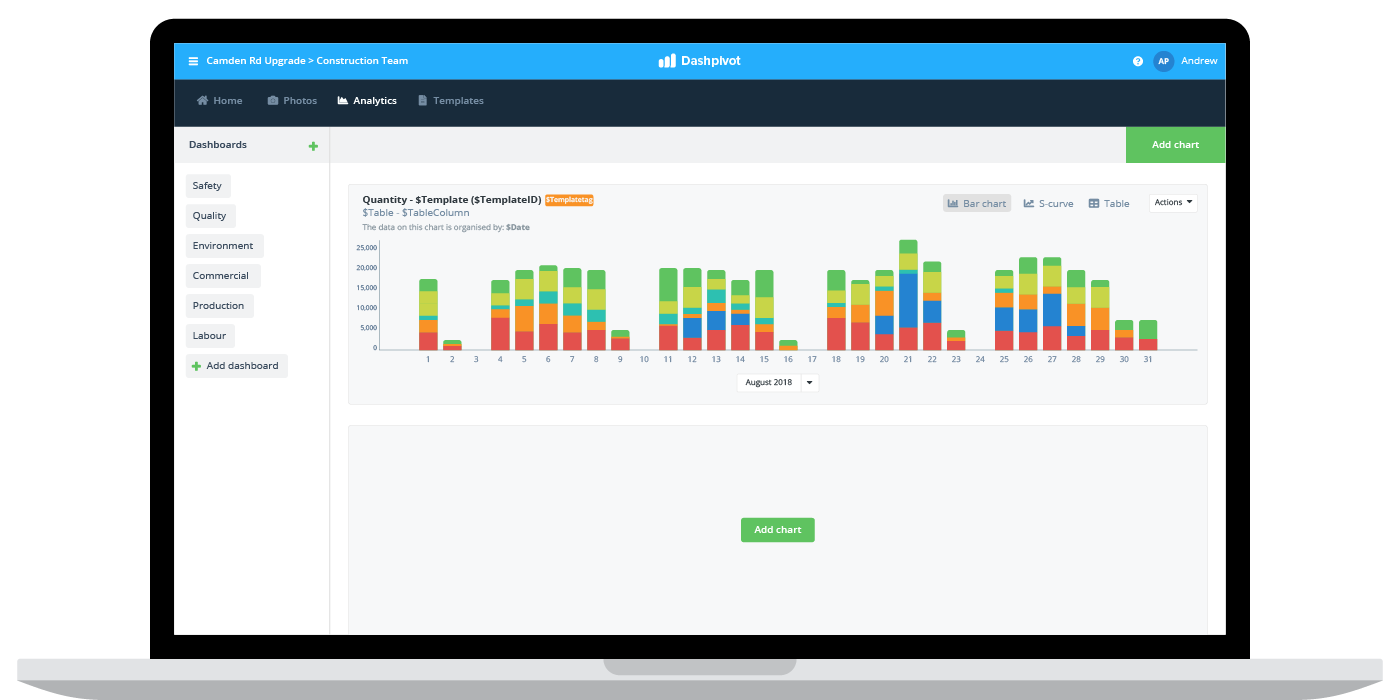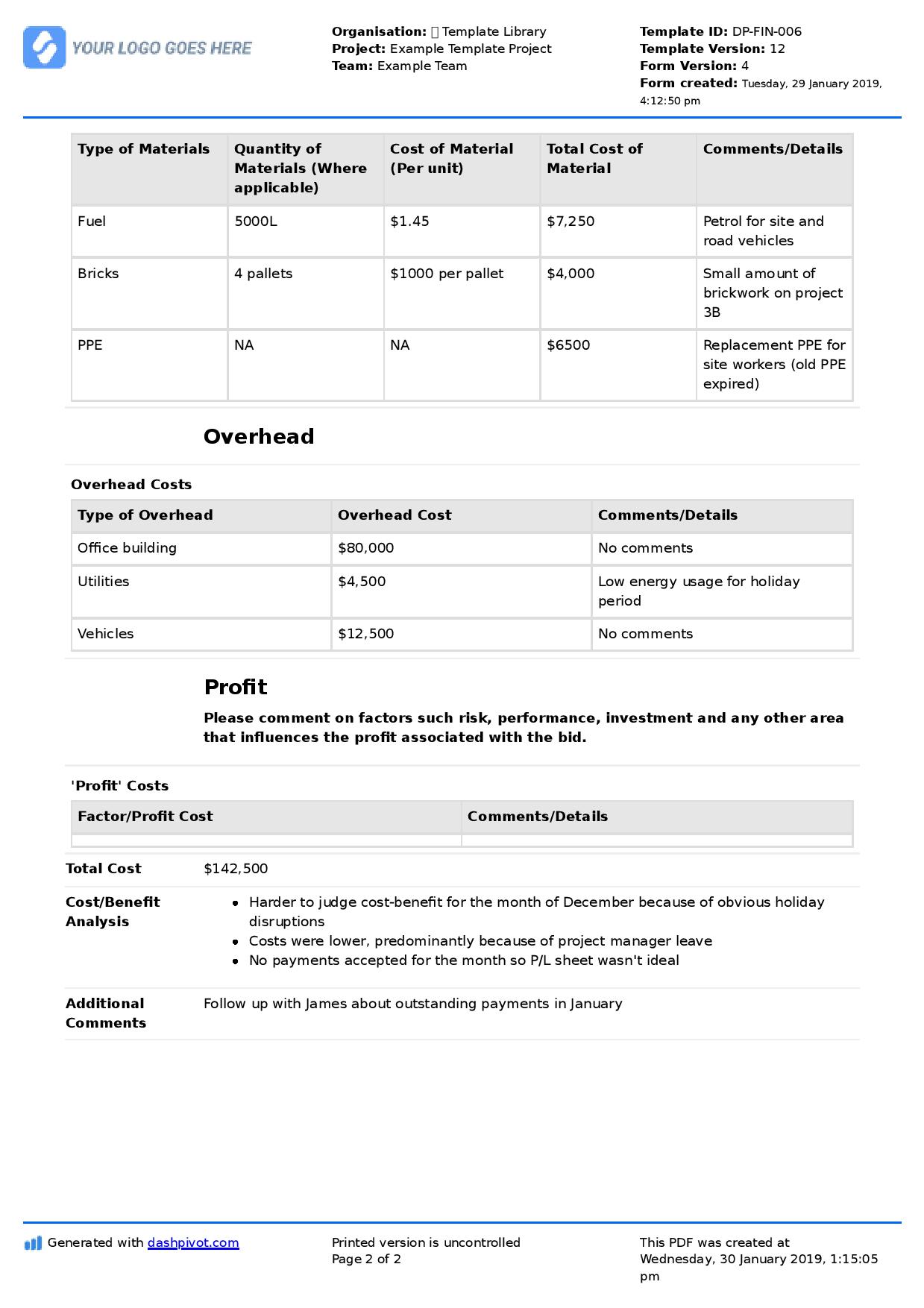Finance – Construction cost analysis
Cost analysis for construction: What you need to know and understand
This article breaks down the topic of cost analysis for construction. It covers what cost analysis involves, why it’s important, and how to do it right to keep your construction projects on budget.

What is a cost analysis in construction?
A construction cost analysis is an analysis performed by a construction company or its workers to accurately identify where the company or project is using or 'spending' its money and resources - and whether or not this money is being well spent.
Cost analysis in construction is even more important than in many other industries. The nature of construction projects and bidding for work makes understanding costs and margin critical to a sustainable business.
The purpose of a cost analysis is to identify the parts of a project or parts of a business which are not getting good return on investment.
While companies and workers can rely on their gut and instincts to partially inform management and others as to how well components of projects are being managed, you will want to quantify as much of the process as possible - and you will want to know and understand exactly what you are trying to analyse and figure out before you go ahead and do any analysis.
Cost-benefit cost analysis, building construction cost analysis, and historic cost analysis
Construction cost analysis is the same as almost any type of analysis in that you can cut and slice the analysis in a number of ways. There are a couple of ways to approach cost analysis; one is to look forward (which is more so estimating), and the other is to look back.
The other major consideration is whether you are doing a business cost analysis where you factor in overhead and business costs, or whether you are looking at project efficiency specifically, in which case you will focus on project delivery costs.
Many construction companies will use historic data and cost analysis to inform their estimates and to perform detailed cost-benefit analyses for specific project and works.
For example, many companies perform formal cost-benefit analyses based on tendering, bidding and scope of work information, whereby the company weighs the benefits against the costs (some of these costs and benefits are direct and obvious while some are softer and more nuanced), and decides whether to move forward.
We will leave looking forward and estimating to another day, as it's a major topic in and of itself.
A good example of a backward or historic cost analysis, which is more pertinent for us today, would be when a construction company conducts a building construction costs analysis. Some construction companies don't build 'buildings', and some only play a small part in a specific phase, but it's easy and informative to look at a cost analysis in this way.
In order to perform a building construction cost analysis, the construction company will likely break down the costs into major categories like labour, materials, supplies.
They may also look at performance in terms of functions or phases, or something else.
The company will then reconcile all of their cost data, probably compare it to what was estimated or forecast, and then talk about and discuss what they were able to achieve by spending that money in that area.
Compartmentalising these cost components is the key to an effective cost analysis. It's easy for a company to look at the success or failure of a project as profit vs. cost, but there is a lot more detail to be gained and a lot of learnings to be had by understanding where the profit was made, and where more could have been made.
Once a company has been able to segment or sort its costs, it can then begin to do an analysis on these expenditures. This usually entails some quantitative work, as well as some qualitative inputs.
And this is where how you perform the analysis becomes critical too.
Construction cost analysis reporting
The medium in which you analyse your costs is important. Some companies are happy using spreadsheets to perform their analysis, others rely on accounting software, and some use dedicated document frameworks like you see below.
The framework you see below is a good example of a typical costs analysis for a construction company. This cost analysis could be for a specific project too, but the overhead and profit costs would likely be ommited, with a greater focus on the project delivery costs of labour, materials and plant being more important.
No matter how you perform the actual analysis and calculations of costs and benefits, you will need to be able to create a construction cost analysis report, which will be the final cost analysis 'report'. This will serve as the document you send to others, discuss, and make informed decisions based off.
This report should offer some clear details which explain how the numbers came about, as well as supporting and calrifying information so it's not just a bunch of numbers. Anyone in the company should be able to look at the cost analysis report and at least understand how the findings have been reconciled and assessed.
The actual assessment and deeper analysis will require a greater knowledge of the business and its operations.

Use and edit this construction cost analysis framework for free.
Construction cost analysis software and streamlined management
Some companies utilise construction cost analysis and financial project planning software to streamline and manage most of this reporting, documentation and analysis.
There are many benefits to this approach.
The first is that it is much, much easier to standardise the information being captured on site. Using dedicated software and apps, the people on site can document and capture everything happening digitally (using a phone or tablet).
For example, instead of someone filling in their timesheet on a PDF, then uploading it and email it to someone in the office, they can just use a timesheet app, which enables them to input their hours on the spot - and then it's instantly and automatically sent to the cloud where people in the office can access it and approve it. There's your labour costs managed.
In addition to reconciling cost information easily, the technology also creates constraints for people filling in information. Instead of people documenting their hours with the wrong cost codes, the software ensures the right cost codes are chosen.
You can get even more benefit out of this type of functionality by making it more likely that your people will select from approved suppliers and materials, saving you money in the process.
Software automatically aggregates and organises all of your costing information for you, so that you don't need to spend hours and hours reconciling data - and so that you have confidence that all of the data is accurate and up-to-date.
By consolidating how your project delivery information is captured, including labour hours, timesheets, materials and more, you can display this information in consolidated dashboards and graphs to see vhow much money is being spent and where.
You can also use this softwares to create and manage the cost analysis report you saw above, which makes formatting and sharing professional reports automatic.

No matter how you manage and maintain your project costs, and how you analyse and report on your costs, cost analysis is an absolutely essential part of of your business processes.
Construction companies are an incredibly important part of our economy and landscape, and the more accurately these companies and projects are able to analyse and their forecast their costs, the more likely we will all be to get more successful projects and better assets.
The more efficient construction companies become through smart analysis and good decision making, the more everyone wins.

Construction Cost Analysis
This construction cost analysis template makes your cost analysis easier and more organised than spreadsheets and PDFs.

Construction Timesheet
Keep timesheets standardised and accurate, secure and organised.

Progress Claim template
Streamline and automate the progress claim process to get paid faster and look more professional.
